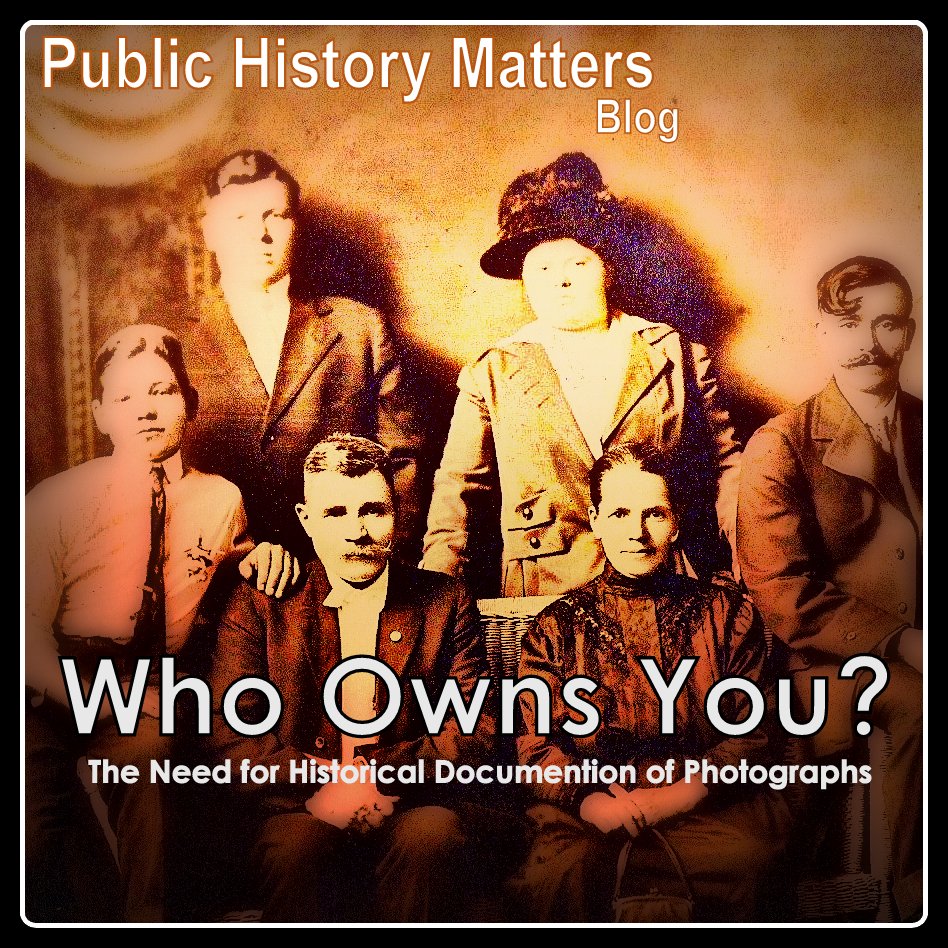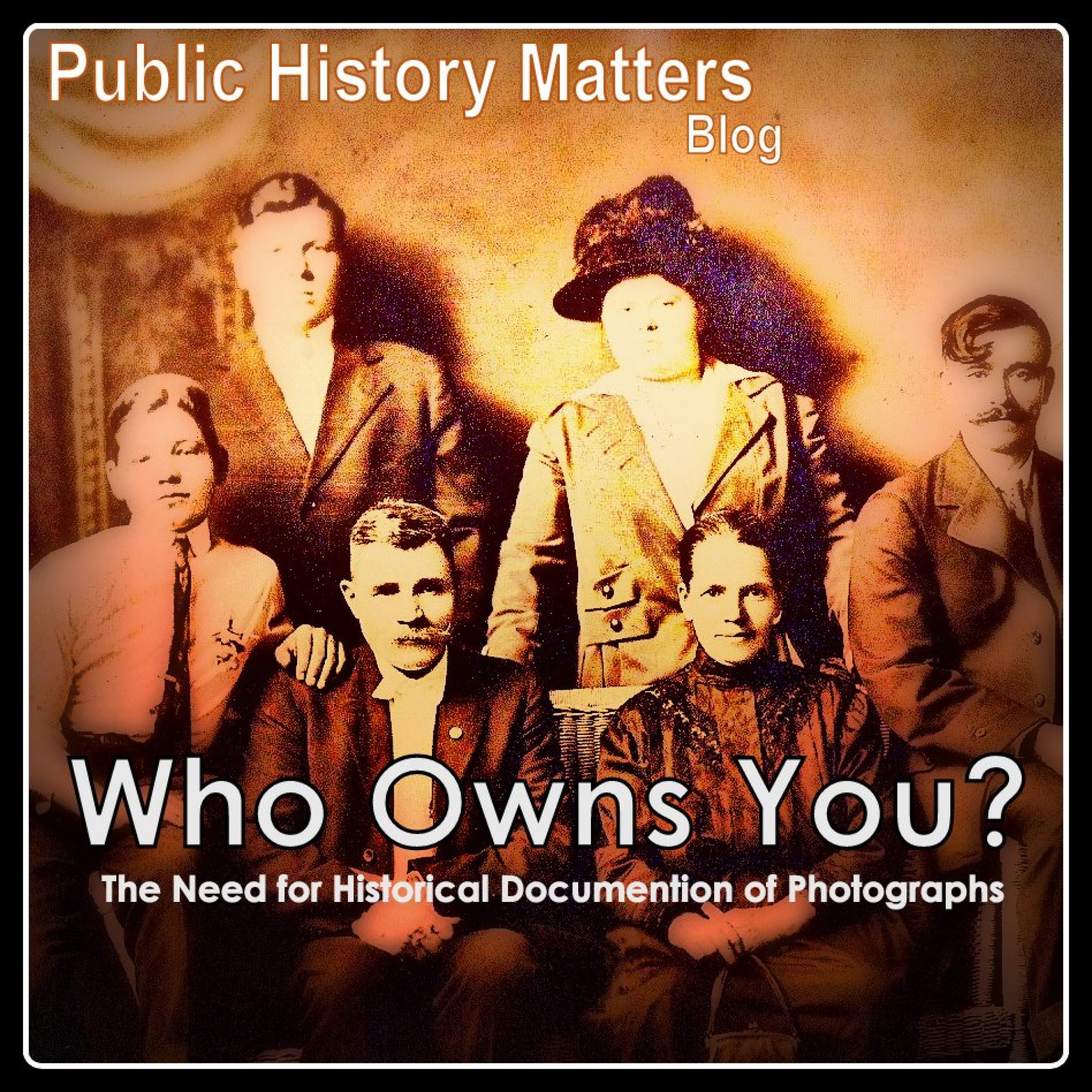Gallery with alias: PUBLIC_HISTORY_BLOG_POSTS not found
 Photo: Used by permission from the Farkas Family Collection. c. 1915. Not in the public domain.
Photo: Used by permission from the Farkas Family Collection. c. 1915. Not in the public domain.
“A photograph has much greater historical value if information is available about where and when it was taken and about any people in the photograph.” ~ Preserving History: How to Digitally Archive and Share Historical Photographs, Documents, and Audio Recordings
Identifying old photos is fun, but there is a responsibility that comes with it: the need to fully document images for the sake of historical reference, access, and ownership.
In your community, you might be blessed to have so many history organizations and enthusiasts sharing old photographs online–especially through social media.
However, you’ve probably noticed that the vast majority of these online sharings omit essential information necessary to properly document these images: Who created this photograph and when? Who or what is the object of the image? Who owns or manages the image? Of course depending on one’s interest, there could be other important information to include, such as type of image useful for dating purposes (e.g., tintype, Daguerreotype, or Ambrotype).
Nothing could be more frustrating to professional and trained amateur historians than witnessing the peddling of these undocumented artifacts. It’s a setup for later historians and others who will invariably struggle with identifying these unmarked images.
A photograph has much greater historical value if information is available about where and when it was taken and about any people in the photograph. This documentation and information about who provided the item for the archive are essential components of a historical archive. The term metadata is often used to describe this information about a particular item. The information needs to be recorded in a way that can be propagated with the photograph over the long-term. Without such documentation, the information about historical items depends on the memory of certain individuals and has a high probability of being lost.
Key Points
Documentation is essential for the long-term historical value of archived digital images. Here’s more essential advice from Preserving History. Here’s what should be included:
-
- Name of the file with the image
-
- Date or estimated date that a photograph was taken or that a document was created
-
- Basic description of the contents of the master image
-
- Additional comments and information about the master image
-
- For a photograph, the name of the original photographer
-
- The source or name of the person who provided the photograph or document for the digital archive
-
- Information about the creation of the digital image
-
- Information about legal rights for the digital image
The documentation should be updated as new information becomes available.
MORE DANGERS OF UNDOCUMENTED PHOTOGRAPHS
In earlier posts of the Public History Matters blog, we celebrated the abundance of photographs held by local history organizations and their willingness to make these artifacts available to the public (“Small Town Museums Reveal Historical Photos“).
Any history organization—of any size or budget—with online access can now present their historical photographs to the world. Such abundance of readily accessible local history photographs on the internet is remarkable, and only made available through the democratization of digital media. Moreover, these photographs can be used in exciting new ways to educate, entertain, and inspire the public to take an interest in local history.
However, in “Watermarking History: Laying Claim to the Public Domain,” we also called out what we view as the unethical practice of watermarking old historical photographs:
But legally speaking, many of these local history photo archives contain images that are in the public domain, and anyone may use these images free and clear of any restrictions–including watermarking them and publishing them elsewhere on the internet. But is this ethical?
Like most things in life, the treatment of historical photographs in the public domain comes down to a matter of respect for their intrinsic and original value to the public (i.e., they should be considered legally and in spirit as in the public interest). For public historians, the matter is also about professional ethics.
Our advice then for public historians:
-
- Don’t alter images
-
- Don’t republish images without permission of the copyright owner
-
- Attribute the source archive or collection
-
- Don’t watermark images in the public domain
-
- Instead of watermarking images, provide attribution or annotation as a caption or footnote
As for historical images posted to social media–where sharing among thousands of people is easily possible–there is a severe risk of old photographs being disconnected from their historical documentation–including information about rightful ownership.
A too common belief among the public and far too many untrained historians is that all “old photographs” are in the public domain–free to possess, share, manipulate, watermark, or monetize. This is simply not true. Photographs must be assumed to be private property unless clearly identified and understood as being in the public domain.
But how would we know this unless photographs are properly documented? Here in lies another danger of undocumented images. Just because an historical image is widely disseminated and shared on social media does not mean that it is free of any copyright or ownership claims. In fact, a lack of proper historical documentation encourages a false assumption that such images are in the public domain and therefore free to appropriate.
Without proper documentation provided by historians we are left to our own conclusions as to ownership of historical photographs. Not only do we find this practice sloppy, haphazard, and unethical, it may be illegal if historians are peddling copyrighted material or private property belonging to others.
OUR POSITION – HERE’S WHAT CAN BE DONE
At The Social Voice Project, we strongly encourage professional and amateur public historians, local museums, and historical societies to move beyond mere presentation of historical images–either in their museum exhibits or online social media posts.
Doing local history properly requires documenting and affixing essential information to artifacts in some way, such as adding digital metadata, exhibit captioning, or at the very least an acknowledgement of the source, ownership, or collections where they can be found.
At the very least, referencing ownership or parties responsible for managing images helps point us back to the original and historically intact artifact. This value in this cannot be understated in the digital age, where nearly everyone has the ability to alter or manipulate images for whatever reason, including propaganda. (See 12 Historic Photographs That Were Manipulated).
Local historians and genealogists have an obligation to perform and promote best practices when it comes to historical images. Future generations will thank us. Here’s what can be done:
History organizations should assign a person to oversee and manage their image collection(s)
Ensure that all historical images are documented systematically
Add metadata to all digitized images
When posting images to social media, give attribution and ensure that each image is captioned appropriately to include archival information
PUBLIC HISTORY MATTERS
At The Social Voice Project, we celebrate history and people through our community oral history projects that give us a chance to look, listen, and record the voices and stories of our time. We encourage all local historical societies and museums to capture, preserve, and share their communities’ lived experiences, memories, customs, and values. Future generations are depending on it.
Contact TSVP to learn more about our commitment to public history and technical assistance in creating community oral history projects.

You must be logged in to post a comment.